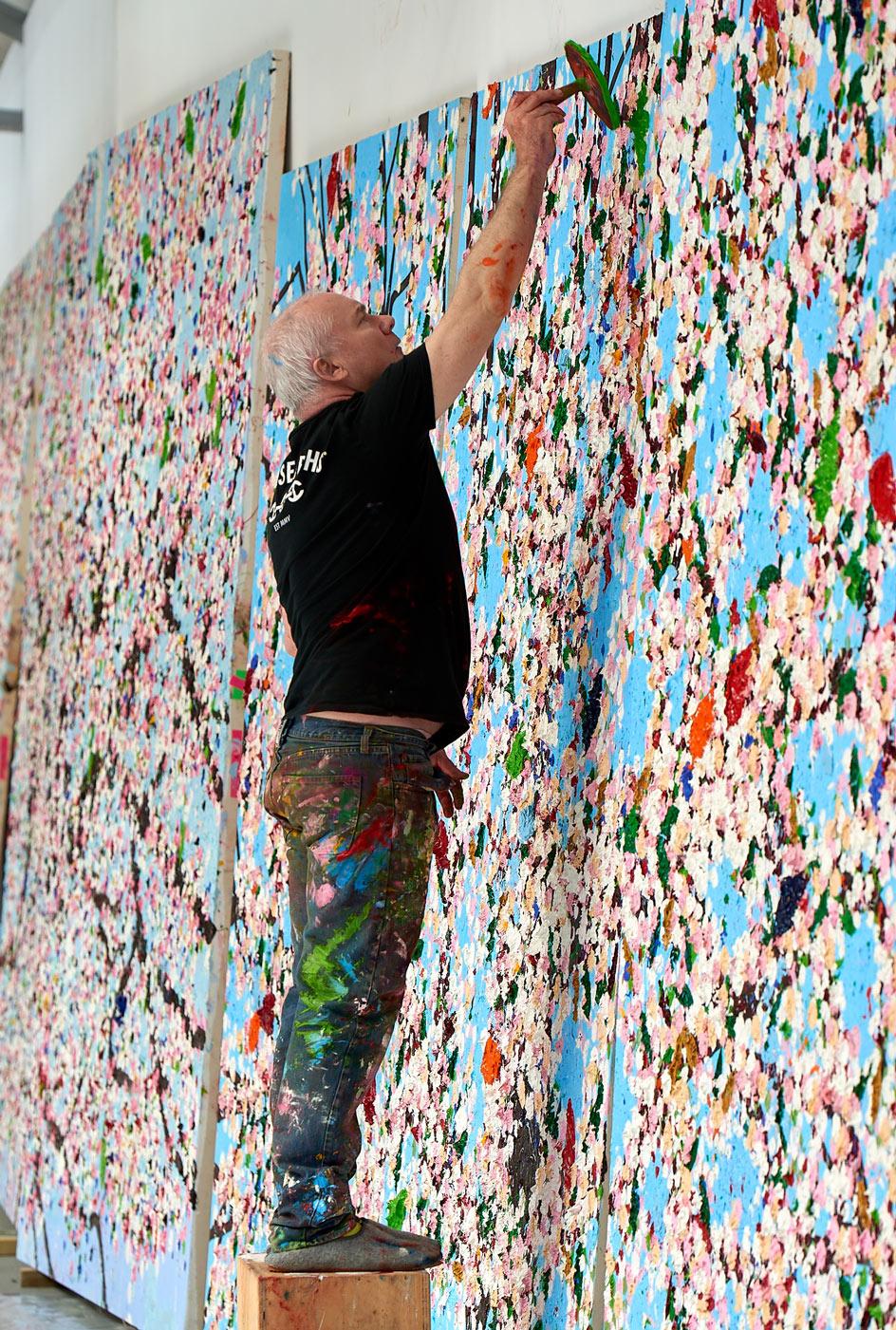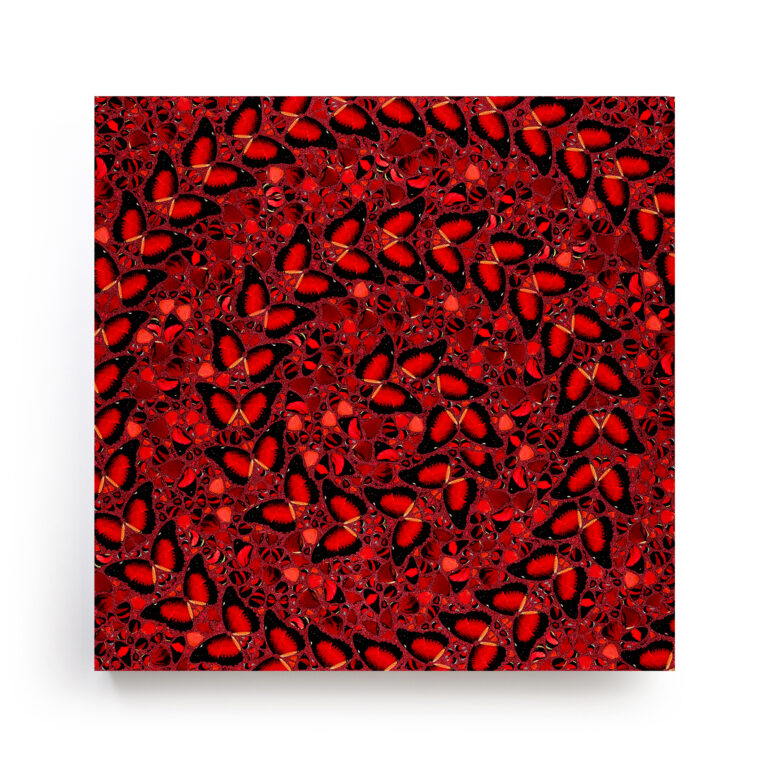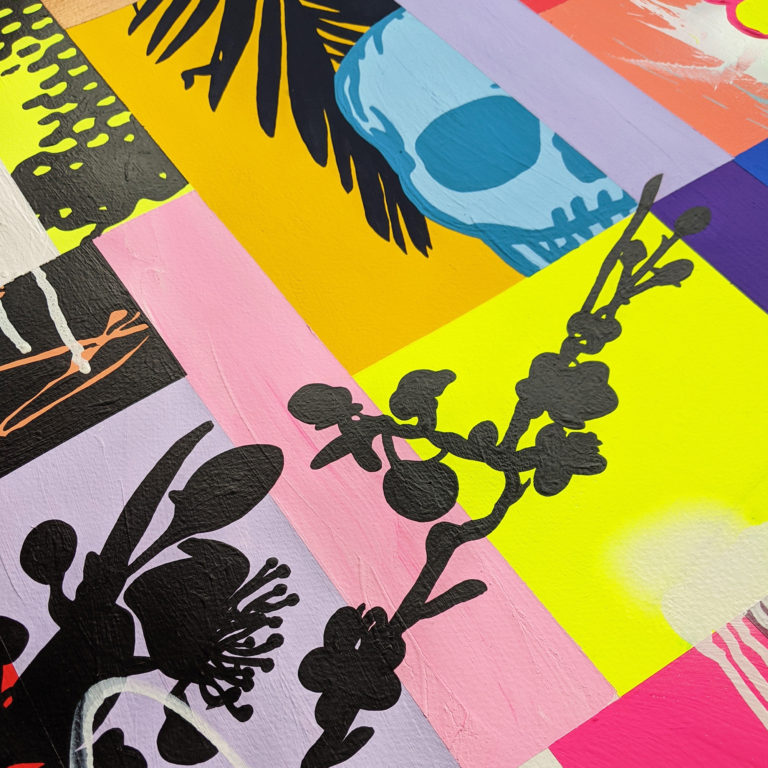
Artwork
Biography
Damien Hirst was born in 1965 in Bristol and grew up in Leeds. He studied at Goldsmiths College in the mid–late 1980s before being awarded the Turner Prize in 1995. Hirst has used a varied practice of installation, sculpture, painting and drawing to explore the complex relationship between art, life, and death.
“Art is about life and it can’t really be about anything else … there isn’t anything else,”
Damien Hirst
His work investigates and challenges contemporary belief systems and dissects the tensions and uncertainties at the heart of human experience.
Hirst developed his interest in exploring the “unacceptable idea” of death as a teenager in Leeds. From the age of sixteen, he made regular visits to the anatomy department of Leeds Medical School in order to make life drawings like ‘With Dead Head’, 1991. The experiences served to establish the difficulties he perceived in reconciling the idea of death in life. Of the prominence of death in his work ‘A Thousand Years’, (1990) he has explained “you can frighten people with death or an idea of their own mortality, or it can actually give them vigour.”
At Goldsmiths, Hirst conceived and curated ‘Freeze’ – a group exhibition in three phases. The exhibition of Goldsmiths students is commonly acknowledged to have been the launching point not only for Hirst, but for a generation of British artists. For its final phase he painted two series of coloured spots on to the warehouse walls. Hirst describes the spot paintings as a means of “pinning down the joy of colour”, and explains they provided a solution to all problems he had previously had with colour. It has become one of the artist’s most prolific and recognisable series, and in January 2012 the works were exhibited in a show of unprecedented scale across eleven Gagosian Gallery locations worldwide.
In 1991 Hirst began work on ‘Natural History’, arguably his most famous series. Through preserving creatures in minimalist steel and glass tanks filled with formaldehyde solution, he intended to create a “zoo of dead animals”. In 1992, the shark piece, ‘The Physical Impossibility of Death in the Mind of Someone Living’ was unveiled at the Saatchi Gallery’s Young British Artists I exhibition. The shark, described by the artist as a “thing to describe a feeling”, remains one of the most iconic symbols of modern British art and popular culture in the 90’s. The series typifies Hirst’s interest in display mechanisms. The glass boxes he employs both in ‘Natural History’ works and in vitrines, such as ‘The Acquired Inability to Escape’ (1991), act to define the artwork’s space, whilst simultaneously commenting on the “fragility of existence”.
Since 1987, over 80 solo Damien Hirst exhibitions have taken place worldwide and his work has been included in over 260 group shows. Hirst’s first major retrospective ‘The Agony and the Ecstasy’ was held in the Museo Archeologico Nazionale in Naples in 2004. His contribution to British art over the last two and a half decades was recognised in 2012 with a major retrospective of his work staged at Tate Modern.
The artist lives and works in London, Gloucestershire and Devon.
Contact us to request the catalogue of available artworks by Damien
Banner image credit: Oli Scarff
Exhibitions
Media

Watch: Tate Modern (2012)
Damien Hirst takes us through his 2012 exhibition at Tate Modern with curator Ann Gallagher

Watch: Fondation Cartier pour l'art contemporain (2021)
Damien Hirst discusses his Cherry Blossoms series




